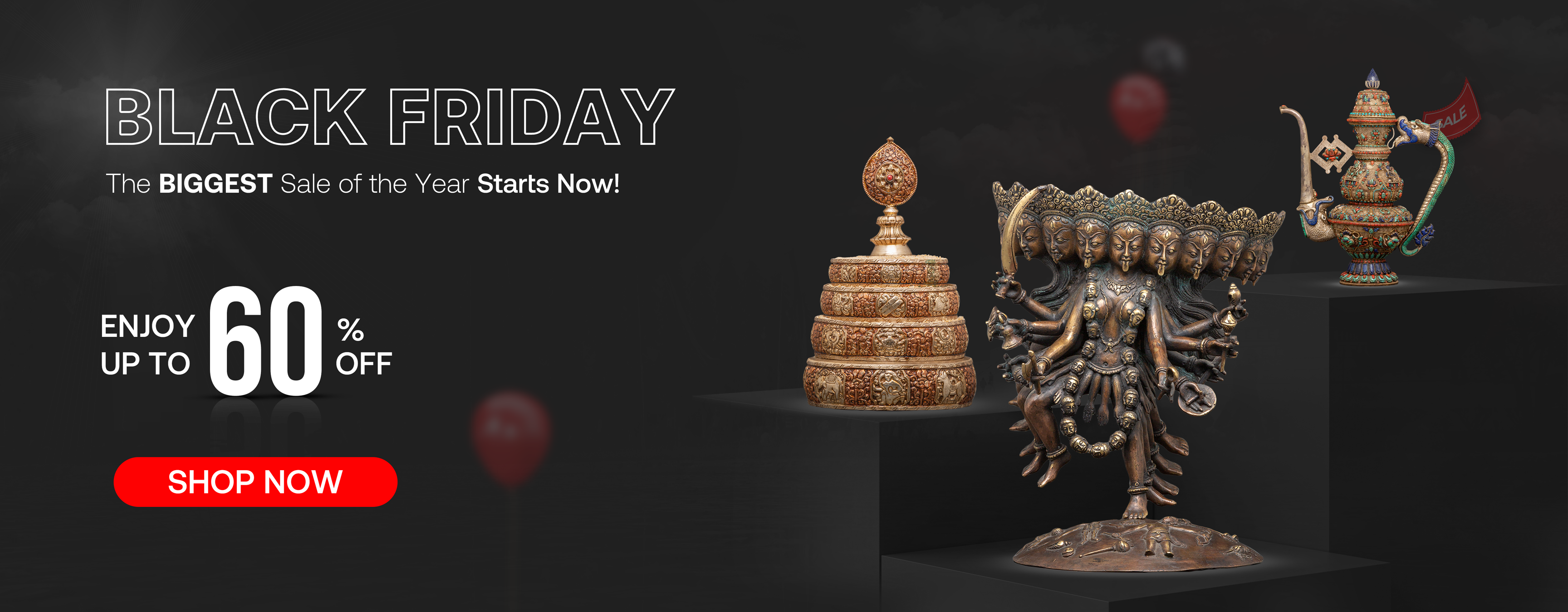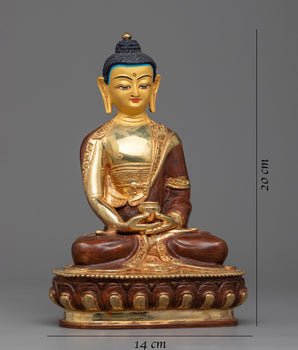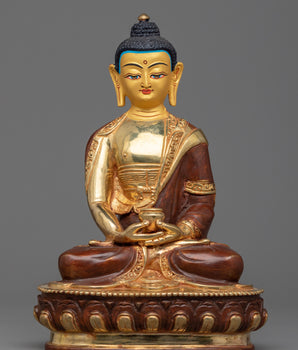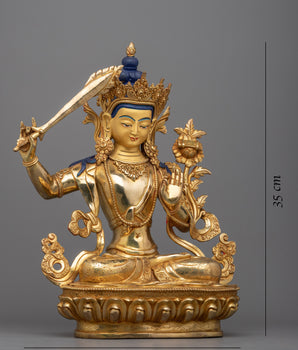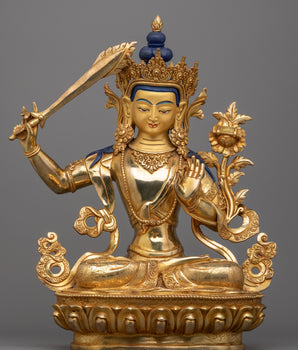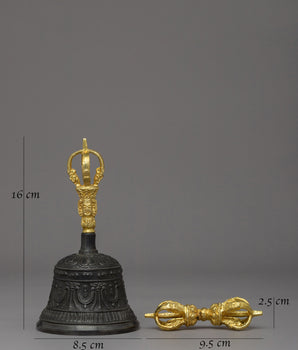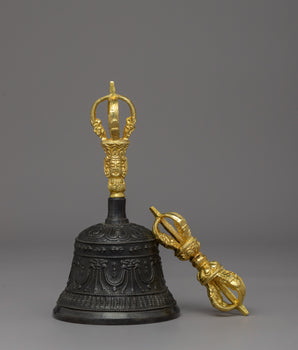Rahula in Buddhism: Why the Buddha’s Son Becomes a Fierce Protector in Vajrayana Click here to veiw Rahula of Vajrayana
Click here to veiw Rahula of Vajrayana
When we think of Rahula, we usually recall the touching story of the Buddha’s son—the child who was born on the very day Siddhartha Gautama renounced palace life. Later, when the Buddha returned to his family, Rahula requested ordination and became the first novice monk in the Buddhist Sangha. This human and deeply intimate story of father and son resonates across Buddhist traditions.
Yet Rahula’s identity doesn’t remain confined to early history. In Mahayana Buddhism, he is elevated as a future Bodhisattva and Buddha, embodying discipline and truth. In Vajrayana Buddhism, he is transformed into a wrathful protector deity, a terrifying cosmic figure who swallows the sun and moon to symbolize the eclipse of wisdom.
This dual portrayal makes Rahula one of the most fascinating figures in Buddhist thought, showing how traditions adapt disciples into archetypes of both gentleness and ferocity.
Rahula in Early Buddhism: The Dutiful Novice
In the Pali Canon, Rahula is portrayed as obedient, eager to learn, and deeply committed to the path. His ordination is mentioned in the Mahāvagga (Vinaya Pitaka), and the Buddha’s instructions to him form some of the most personal and practical teachings.
-
Rahula Sutta (MN 61) – Here the Buddha instructs Rahula on truthfulness, comparing a liar to a water pot turned upside down—useless and empty.
-
Ambalatthika-Rahulovāda Sutta (MN 61) – The Buddha teaches Rahula the importance of mindfulness in every bodily action, grounding him in meditative discipline.
-
Cula-Rahulovāda Sutta (MN 147) – Rahula is guided in meditation on impermanence, leading to the development of insight.
In these early accounts, Rahula is portrayed as a model novice monk, the perfect examplefor younger practitioners

Rahula in Thangka Painting (Son of Shakyamuni Buddha, Photo Credit: Rigpawiki.org
Rahula in Mahayana Buddhism: Bodhisattva of Truth and Discipline
As Buddhism expanded through Mahayana traditions, Rahula’s role was reinterpreted within the Bodhisattva framework. He is no longer just the Buddha’s son, but a figure with cosmic destiny.
-
The Lotus Sutra (Saddharma Puṇḍarīka Sūtra) explicitly prophesies Rahula’s future Buddhahood, affirming his place among the Bodhisattvas. This transforms him into an archetype of future enlightenment, much like Maitreya.
-
Mahayana commentaries emphasize his truthfulness and humility. Stories of Rahula being admonished by the Buddha for lying are reframed as evidence of his ability to transform weakness into spiritual strength.
-
Rahula becomes a symbol of renunciation and filial transcendence—a son who gives up worldly inheritance to inherit the Dharma instead.
In Mahayana imagination, Rahula embodies moral integrity, spiritual patience, and destiny as a future Buddha. He is not wrathful but gentle, a Bodhisattva quietly preparing to unfold his full potential.
Rahula in Vajrayana Buddhism: Wrathful Protector of the Dharma
In Vajrayana Buddhism, particularly Tibetan traditions, Rahula takes on an entirely new form—as a Dharmapāla, a wrathful protector deity. This Rahula is unrecognizable compared to the gentle novice monk.
-
Iconography – Rahula is depicted with nine heads, one of them that of a ravenous snake, and a thousand eyes covering his body. His lower half is a coiling serpent (nāga), and he often holds the sun and moon in his hands.

Click here to view the Full thangka of Rahula with Ekajati and Dorje Lekpa
-
Cosmic Function – In myth, Rahula is associated with eclipses. By swallowing the sun and moon, he represents the obscuration of wisdom and clarity. In tantric practice, this imagery is used to symbolize how ignorance veils reality.
-
Guardian of Tantric Secrets – Vajrayana ritual texts describe Rahula as a fierce guardian of esoteric knowledge. He protects practitioners from misuse of mantras and tantric practices. Anyone who violates tantric commitments may face Rahula’s wrath.

-
Compassion in Wrath – Despite his terrifying form, Rahula’s ferocity is seen as skillful means (upāya). His wrath is compassion disguised, intended to protect sincere practitioners and eliminate obstacles on the path.
Here Rahula is no longer a historical figure but a cosmic archetype of transformation, embodying the tantric principle that even negative forces can become allies on the spiritual journey.
Why the Difference Between Mahayana and Vajrayana Rahula?
The difference in Rahula’s portrayal highlights the doctrinal and symbolic priorities of Mahayana and Vajrayana Buddhism:
-
Mahayana Buddhism: Focuses on compassion, continuity with the Buddha’s historical disciples, and the Bodhisattva ideal. Rahula becomes a future Buddha, reflecting Mahayana’s optimism about universal enlightenment.
-
Vajrayana Buddhism: Focuses on transformation of energies, symbolic archetypes, and fierce protectors of tantric practice. Rahula becomes a wrathful Dharmapāla, reflecting Vajrayana’s emphasis on turning even obstacles into wisdom.
This divergence shows how Buddhism reinterprets figures to meet the needs of practitioners: Rahula as role model for novices in Mahayana, and Rahula as tantric protector in Vajrayana.
Rahula’s journey from the Buddha’s son and novice monk to Bodhisattva and cosmic protector illustrates the adaptability of Buddhist traditions. He embodies both intimacy and universality:
-
In Mahayana, Rahula teaches us about truth, humility, and the promise of future Buddhahood.
-
In Vajrayana, Rahula reminds practitioners that even the fiercest obstacles—ignorance, obscuration, and fear—can become protectors when transformed by wisdom.
Rahula’s story shows that Buddhism does not freeze its figures in history. Instead, it expands them across layers of meaning—personal, symbolic, and cosmic. For modern practitioners, Rahula represents the power of transformation: the same figure can be both a gentle monk and a wrathful guardian, depending on the lens of practice.






